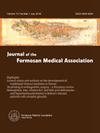临床实践中的有效预防可避免人力资本损失:来自台湾国民健康保险的真实证据。
IF 2.6
3区 医学
Q1 MEDICINE, GENERAL & INTERNAL
引用次数: 0
摘要
背景/目的:有效的预防可以保护劳动力的健康,避免人力资本损失,保持员工生产力和经济增长:我们利用终末期肾病(ESKD)和肺癌患者的真实数据,将他们的终生生存函数与就业率和工作薪酬相乘,估算出他们的终生就业时间和收入。我们将他们与相应年龄、性别和日历年的匹配参照者进行比较,以评估终生就业时间和收入损失的差异。从 2000 年到 2017 年,83358 名终末期肾病(ESKD)患者的终生生产力损失率为 32%-66%。同样,我们收集了 2011-2018 年间 24904 例肺部腺癌发病病例,并估算了因早期发现而节省的潜在人力资本。根据台湾ESKD发病率的变化趋势,我们计算了2000-2020年间ESKD患者以GDP(国内生产总值)百分比计算的终生人力资本损失:结果:以国内生产总值百分比计算的 ESKD 患者终生生产力总损失,男性患者介于 0.000398% 与 0.01% 之间,女性患者介于 0.0001% 与 0.009% 之间。患者年龄越小,GDP%的损失越大。同样,肺腺癌的早期发现也在一定程度上挽救了生命和生产力:结论:在早期阶段成功预防灾难性疾病将节省劳动力的终生就业时间和生产率。未来的国家医疗保险改革可以考虑加强公共卫生和医疗机构之间的协调,重点关注疾病和并发症的有效预防,以挽救生产力损失。本文章由计算机程序翻译,如有差异,请以英文原文为准。
Effective prevention in clinical practice may save human capital loss: Real-world evidence from Taiwan's National Health Insurance
Background/Purpose
Effective prevention could protect the health of the workforce, save human capital loss, and maintain employee productivity as well as economic growth.
Methods
Using real-world data of patients with end-stage kidney disease (ESKD) and lung cancer, we multiplied their lifetime survival functions with employment ratios and working salaries to estimate the lifetime employment durations and earnings. They were compared with corresponding age-, sex-, and calendar year-matched referents to assess the differences in loss of lifetime employment duration and earnings. From 2000 to 2017, 83,358 patients with end-stage kidney disease (ESKD) were associated with 32–66% lifetime productivity losses. Similarly, we collected 24,904 incident cases of lung adenocarcinoma during 2011–2018 and estimated the potential savings in human capital due to early detection. Based on the evolving trends of ESKD incidence rates in Taiwan, we calculated the lifetime human capital losses of ESKD patients in GDP (gross domestic product) percentages during 2000–2020.
Results
The aggregate lifetime productivity losses of ESKD in terms of GDP% varied between 0.000398% and 0.01% for male patients and between 0.0001% and 0.009% for female patients. The younger the patients, the bigger the losses in GDP%. Similarly, early detection of lung adenocarcinoma saved lives and productivity to some extent.
Conclusions
Successful prevention of catastrophic illnesses at early stages would save the lifetime employment duration and productivity of the workforce. Future reform on the NHI could consider closer coordination between public health and healthcare organizations, focusing on effective prevention of diseases and complications to save productivity loss.
求助全文
通过发布文献求助,成功后即可免费获取论文全文。
去求助
来源期刊
CiteScore
6.50
自引率
6.20%
发文量
381
审稿时长
57 days
期刊介绍:
Journal of the Formosan Medical Association (JFMA), published continuously since 1902, is an open access international general medical journal of the Formosan Medical Association based in Taipei, Taiwan. It is indexed in Current Contents/ Clinical Medicine, Medline, ciSearch, CAB Abstracts, Embase, SIIC Data Bases, Research Alert, BIOSIS, Biological Abstracts, Scopus and ScienceDirect.
As a general medical journal, research related to clinical practice and research in all fields of medicine and related disciplines are considered for publication. Article types considered include perspectives, reviews, original papers, case reports, brief communications, correspondence and letters to the editor.

 求助内容:
求助内容: 应助结果提醒方式:
应助结果提醒方式:


